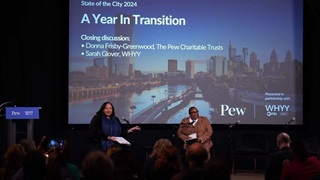New Model Aims to Conserve Wildlife Migrations on Working Lands
A federal-state agreement signed this fall may offer a better way for the nation to maintain wildlife habitats on privately owned land
America’s wildlife is a national treasure. From mule deer to monarchs, the natural world supports human life, fosters a deep sense of connection to nature’s bounty and serves as the backbone of our $454 billion outdoor recreation economy—boosting tourism, generating gear purchases and supporting local jobs. Without wild creatures and their habitats, America would lose a profound part of its identity.
When we imagine herds of elk and other migrating animals grazing amid fields of sagebrush or grassland, idyllic places like Yellowstone, Zion and Glacier national parks come to mind. And it’s true that these iconic public lands provide crucial habitat for many of America’s wildlife. But new research is beginning to confirm what many rural communities already know: Privately owned, working lands such as cattle ranches, agricultural fields and forests are equally important for wildlife that migrate each spring and summer from one patch of habitat to another.
The conservation of migrating wildlife, including mule deer, pronghorn and elk, is the focus of a new agreement signed by Wyoming Gov. Mark Gordon and U.S. Department of Agriculture Secretary Tom Vilsack. The memorandum of understanding provides a framework for how the state and USDA will work with voluntary landowners in Wyoming to modify outdated and deadly barbed wire fences, avoid development and restore degraded habitat in areas deemed important for migrating animals. This innovative agreement can and should be a guide for other states.
Read the full commentary, which appeared in Route Fifty on December 9.
Spotlight on Mental Health
MORE FROM PEW
Explore Pew’s new and improved
Fiscal 50 interactive
Your state's stats are more accessible than ever with our new and improved Fiscal 50 interactive:
- Maps, trends, and customizable charts
- 50-state rankings
- Analysis of what it all means
- Shareable graphics and downloadable data
- Proven fiscal policy strategies
Welcome to the new Fiscal 50
Key changes include:
- State pages that help you keep track of trends in your home state and provide national and regional context.
- Interactive indicator pages with highly customizable and shareable data visualizations.
- A Budget Threads feature that offers Pew’s read on the latest state fiscal news.











